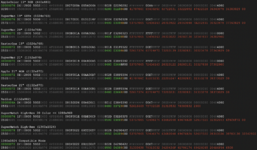jmacz
Well-known member
I tried mucking with the v3 ROM but didn't get very far. Changed one of the entries (at all bit depths) from 1280x960 to 1280x1024. After installing the modified ROM, I see 1280x1024 as an option in the SuperVideo control panel but selecting it and rebooting results if the video card sending 1280x960 to the LCD but a virtual resolution of 1280x1024. I think this is a similar result to what you had @eharmon ?
I don't have a disassembler set up (nor do I fully understand the nuances of disassembling one of these ROMs) but I did end up searching for all 0x03C0 in the ROM (which is the 960 vertical resolution) and found a few of them that were right next to a stream of other vertical resolutions (1024, etc) so changed those. Didn't help.
I took a peek inside the SuperVideo 3.1 control panel. It does have some SMxx resources, one of this is a SMtm which has a name that referred to timings in it. But I don't understand enough to know what the bits in that resource mean.
I don't have a disassembler set up (nor do I fully understand the nuances of disassembling one of these ROMs) but I did end up searching for all 0x03C0 in the ROM (which is the 960 vertical resolution) and found a few of them that were right next to a stream of other vertical resolutions (1024, etc) so changed those. Didn't help.
I took a peek inside the SuperVideo 3.1 control panel. It does have some SMxx resources, one of this is a SMtm which has a name that referred to timings in it. But I don't understand enough to know what the bits in that resource mean.

